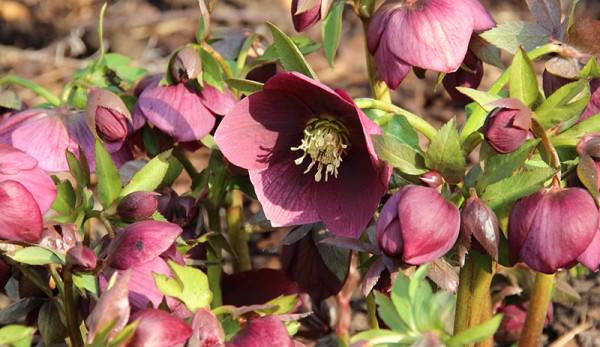
Over the past few weeks, I’ve seen quite a few pictures on social media of one of the first flowers to show up for us in temperate climates: the Lenten rose. The Lenten rose is part of the Hellebore genus. The true Lenten rose is Hellebore orientalis or a hybrid thereof. The hybridization of this genus has given us a wider variety of flower colors, such as my plant’s beautiful plum shade. There is something so magnetic about these flowers. Perhaps it is because it is some of the first color we see in the landscape after a winter of brown and gray.
Hellebores have a long history with humans. Clearly our ancestors were also enchanted by them and their fairy-like beauty because they are the subject of both superstition and Greek tragedy. These flowers tend to be very cold hearty, the Lenten rose appearing around Easter and the Christmas rose appearing around December.
The Christmas rose, aka black hellebore (Hellebore nigra), is perhaps one of the best known for medicinal reasons, though the entire genus tends to have similar constituents. There was a time when the roots of these plants were used in the same way as foxglove (Digitalis purpurea). Today, both of these plants are used in the pharmaceutical industry, while in the home garden they’re considered to be toxic. In the case of hellebore, the chemicals found in the roots were used to slow the heartbeat and lower blood pressure. A small amount of either of the plants, in the hands of an experienced and heavily trained practitioner can be beneficial. In the hands of anyone else, these plants can be deadly when ingested.
My Lenten rose is planted in the shade of our hawthorn tree in the front flower bed. It is the first bit of green to show itself when snow is still on the ground. The bed retains a good bit of moisture and rarely sees much sun. When we designed this bed I worried that we wouldn’t find enough plants with good color to go in the dense shade. Luckily, that is just what the hellebore likes. As spring advances, the plum-colored blossoms of this early riser will give way to the hidden, dusky maroon of the wild ginger that grow at their feet.
If you decide to plant a hellebore you can find quite a wide variety of color to fit the space you have. The intriguing green flowers of Hellebore viridis might be perfect if you don’t need a splash of color. As a bonus, deer will leave them alone.
Despite their toxic reputation, I have never been concerned about having hellebores in my garden, even with young children in the house. My kids know not to eat them because they are for bouquets instead. For Easter this coming weekend, we will gather the first bouquet of spring, floating the short stemmed and long-lived hellebore flowers in a crystal bowl.




